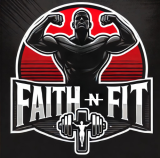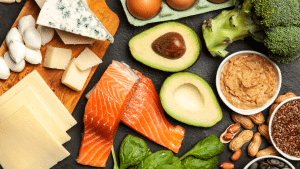Trying to build a fuller, stronger chest? Discover whether the incline vs flat bench press is better for developing your upper pecs—and when to use both.
💪 Introduction
For anyone serious about chest development, there’s one debate that comes up in nearly every gym: Is incline or flat bench press better for upper chest growth? Incline vs flat bench press results often vary depending on individual goals.
If your upper chest is lagging behind your mid or lower pecs, you’re not alone. In this FaithNFIT guide, we’ll break down the key differences between the incline vs flat bench press, how each activates your chest muscles, and how to program them to build strength and aesthetics — the purposeful way.
🔍 What’s the Difference?
Flat Bench Press
- Performed on a horizontal bench (0° angle)
- Primary focus: Mid and lower pecs
- Also activates: Triceps and front deltoids
- Often allows for heavier loads due to stable positioning
Incline Bench Press
- Performed on a bench set at 30–45° incline
- Primary focus: Upper pecs (clavicular head)
- Also activates: Front deltoids and triceps
- Often feels harder because the upper chest is weaker in most people
📊 EMG Studies: Upper Chest Activation
According to studies measuring electromyography (EMG) — which tracks muscle fiber activation — the incline bench significantly activates the upper pecs more than flat bench. Incline vs flat bench press shows different muscle activation levels.
- Incline Bench: Highest upper chest activation
- Flat Bench: Moderate overall chest activation
- Decline Bench: Strongest in lower chest fibers
🧠 Takeaway: If you’re lacking upper pec development, incline pressing should be a top priority.
🏋️ Muscle Growth Potential: Which Builds a Bigger Chest?
🟢 Incline Bench Press
- Best for targeting the clavicular pecs (upper chest shelf)
- Helps create a fuller, rounded look
- Supports balanced chest development and reduces shoulder imbalance
🔵 Flat Bench Press
- Allows you to lift heavier loads
- Trains mid-pecs more efficiently
- Builds overall chest mass and pressing strength
💡 FaithNFIT Tip: Think of incline as a “sculpting” move, and flat as a “mass-builder.”
🧱 When to Use Each in Your Routine
Option A: Incline First, Flat Second
- Prioritize upper chest while fresh
- Ideal if your upper pecs are lagging
Option B: Alternate Weekly Focus
- Week 1: Incline-focused heavy sets
- Week 2: Flat-focused heavy sets
Option C: Use Both in the Same Workout
- Incline Bench: 4 x 8
- Flat Bench: 3 x 6
- Dumbbell Flyes or Dips: 3 x 12–15 for accessory
🙏 FaithNFIT Perspective
Your chest development — just like your spiritual walk — takes balance, intentional effort, and consistency. Whether you’re pressing from a flat bench or pushing upward at an incline, do it to build strength with purpose in your pursuit of incline vs flat bench press mastery.
“Whatever you do, do it all for the glory of God.” – 1 Corinthians 10:31
At FaithNFIT, we train to honor the temple — not just for aesthetics, but to serve stronger and endure longer.
✅ Key Takeaways
- Incline bench is superior for upper chest activation in incline vs flat bench press comparisons.
- Flat bench allows heavier lifts and targets mid-pecs
- Use both to ensure balanced growth and strength
- Prioritize incline if your upper chest is underdeveloped
📎 Latest Articles:
- Incline vs Flat Bench Press: What’s Better for Upper Chest Gains?
- Keto vs Low Carb for Muscle Building: What’s the Real Difference?
- Overhead Press vs Lateral Raises: Which Builds Broader Shoulders?
- Top Natural Remedies to Reduce Face Puffiness After Workouts
- 5 Easy High-Protein Snacks for Muscle Recovery on Busy Days
Subscribe now and get a 14-day free trial workout app for iPhone users.





